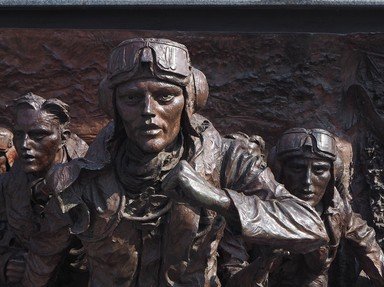In June 1940, as France was falling, and the British army had been evacuated from
, the new British Prime Minister,
, gave a speech in which he opined that the Battle of Britain would soon begin. This would be a battle fought in the air, with the Royal Air Force's Fighter Command, under the command of Air Chief Marshal
, in the forefront.
The early stages of the Battle saw the Luftwaffe attacking shipping in the English Channel, then moving on to hit RDF (radar) stations like
on the Isle of Wight, using the Ju87
dive bomber to great effect. Sector stations like
and ports like
would also come under attack.
First line of defense was 11 Group, under Air Vice Marshal
, a New Zealander, backed up by AVM
's 12 Group. The latter advocated the use of "big wings", which took some time to form up, whilst the former tried to engage the enemy formations as soon as possible, often with smaller units. One well-known pilot who supported the big wing theory was
, who had lost both legs in a pre-war flying accident.
Opposing German formations consisting of Junkers, Dornier and Heinkel bombers, protected by
fighters, were the Supermarine
and Hawker
, flown by pilots soon to be immortalised as "The Few". Often forgotten were the two-man crews of the vulnerable Boulton-Paul
, whose armament could not fire forward.
The Battle would rage throughout the summer, with the Luftwaffe's high point in mid-August, followed by the RAF claiming a bumper crop of victories on 15 September. As the Luftwaffe's focus switched from airfields and radar installations to cities, like
, the capital, it became clear that there would be no invasion in 1940. By October, the Battle of Britain had been won, though the Blitz would make the winter uncomfortable, and it would be a few years before the Allies returned to the continent.

